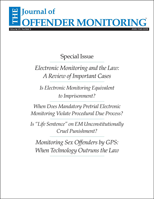Electronic Monitoring and Beyond in Germany
Author: Rita Haverkamp.; Gunda Woessner.
Source: Volume 29, Number 02, Fall/Winter 2016 , pp.20-26(7)

< previous article |next article > |return to table of contents
Abstract:
Germany, unlike the United States, does not have a prison overcrowding problem. Crimes that are punished by a jail or prison sentence in the U.S. often result in the imposition of a fine in Germany. For this reason, Germany has not sought to use electronic monitoring as a ‘release valve’ to reduce prisons populations. Nevertheless, crime and imprisonment rates, while still low, have risen in the last decade, and the German courts are now looking much more closely at EM technology and what it can do. This article comprehensively surveys the current state of electronic monitoring in Germany, including enabling laws, significant pilot programs, types of offenders chosen for EM, early problems encountered as the system began employing new approaches, and what police and courts have learned as they have gained experience. Importantly, the authors also examine EM in the context of Germany’s “conservative corporatist welfare state” political system, which is very different in scope and purpose from neo-liberal systems like those in the United States and England.Keywords: Electronically monitored home imprisonment; electronically monitored early work release; EU prohibitions on preventive detention
Affiliations:
1: Eberhard Karls University; 2: Max Planck Institute for Foreign and International Criminal Law.